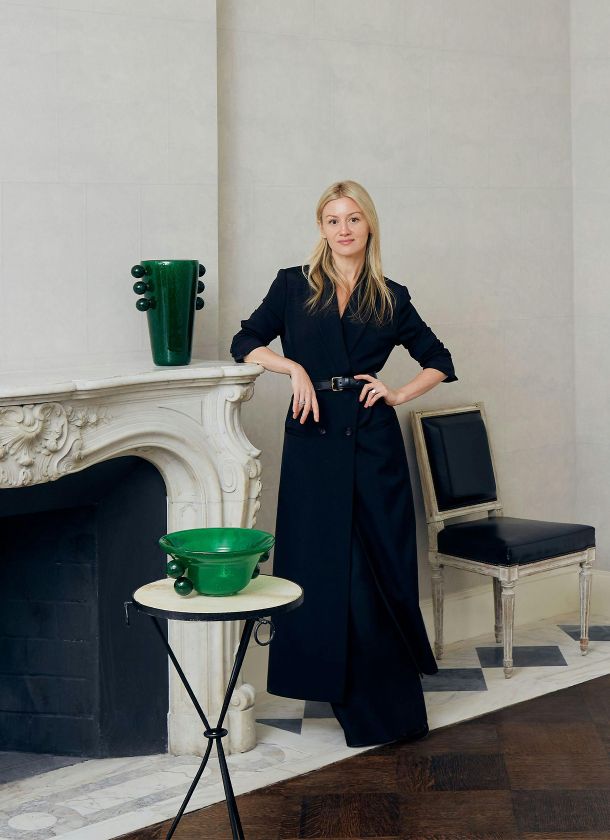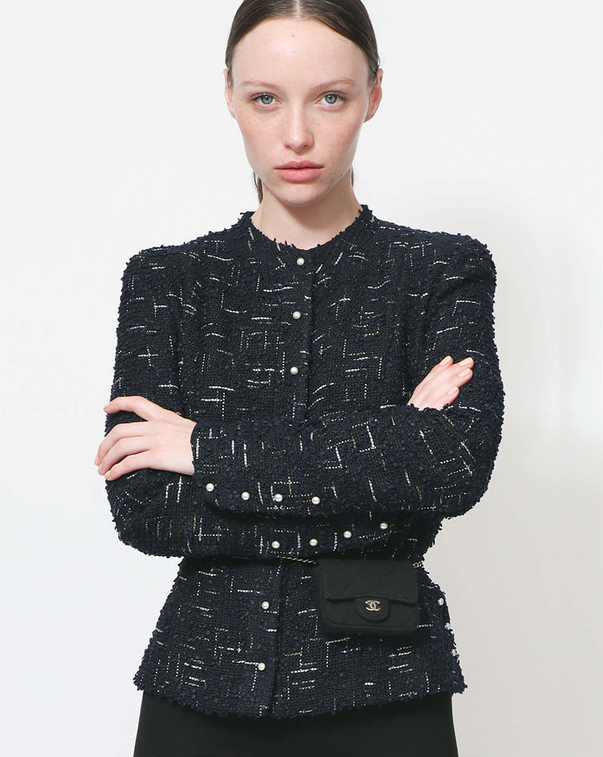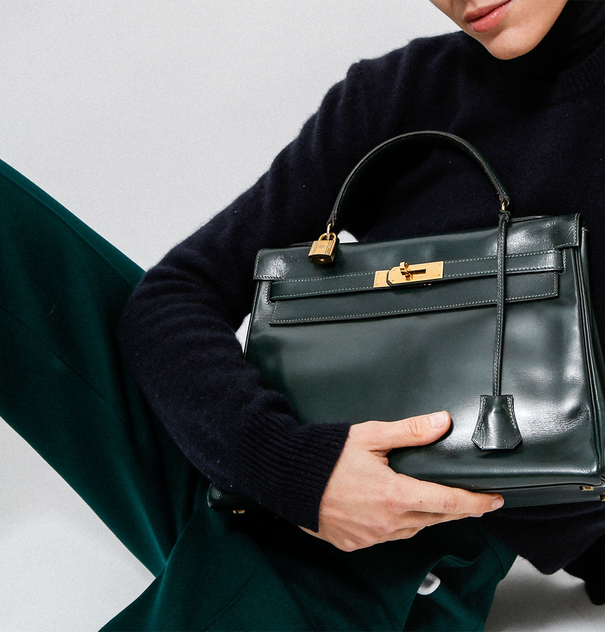The Style Series: Alyssa Kapito

Photo credits: Fujio Emura
There are few interior designers who can bring together the old and the new as seamlessly as Alyssa Kapito. Whether she’s working on a client’s Greenwich Village townhouse, as seen in the recently released Rizzoli monograph Alyssa Kapito: Interiors, or her own Upper West Side duplex, the Sotheby’s-trained ensemblier curates visual assemblages of time-honored treasures — from Giacometti rugs to Le Corbusier stools and Jean Royère coffee tables — that are as graceful as they are welcoming. As she puts it, “A room without vintage has no soul.”
Below, Kapito discusses her favorite finds, the parallels between sourcing fashion and furniture, and how to build an archival collection of your own.
How did you get into interior design?
I was on the art track for a very, very long time. I interned at Christie’s and Sotheby’s through college, and then I got a masters in Renaissance art, but I always loved interiors. When I was a kid, my mom used to take me antiquing, but I wasn’t aware of the world of interior design. More and more, though, it was becoming something that I was obsessed with, and then my husband said, ‘Why don’t you try it for a summer?’ That was it for me. I’m completely self-taught — I never went to school — but my favorite part about it is definitely collecting and the academic side. French mid-century is my sweet spot and what I know the most about.
How do you mix the old and new?
I would say it’s a 2:1 ratio; there’s two antiques for every one new piece. What I do is Neoclassicism—it’s a fresher take on this 1950s European aesthetic—so it’s a mix of custom and antique pieces, and occasionally I’ll work with a contemporary artist, like Jacques Jarrige. We also do a lot of custom upholstery, so we’ll buy new sofas but then have an antique chair next to it. We’re a little heavier on antiques.
What do you collect?
My area of expertise is French, Italian, and Danish design from the 1950s. There was a lot of experimentation with form then—not just in furniture but in fashion and art too. A chair, for example, gets very interesting in the 1950s. I’m also really into Japanese woodwork lately. I find it so simple yet so elevated at the same time; there’s such a respect for craftsmanship that you kind of lose everywhere else. I’ve been looking a lot at these little trays and tiny objects that are so intricate and so perfect.
Do you have any rules for deciding whether or not to purchase a piece?
It’s the same rule that people have with fashion: if you step away from it and you’re still thinking about it a week later, it’s worth your time. I see a lot of beautiful things, but when I walk away from them, I stop thinking about them because I’m looking at stuff all day long. Every so often, though, there’s that fall-in-love moment. Then, everything has to align: I have to have a purpose for it, it has to be in the right price range, and I have to find the form incredibly beautiful.
How important is it to consider an item’s condition?
Not only do you have to understand and know the market well enough to understand how something should be restored, but there are also very few people who can properly restore highly collectible antiques—and it’s a big investment. So, for the average person, it’s important to buy in good vintage condition. If you’re somebody who’s trying to get a steal, I would do the minimum to make it presentable because otherwise you’d be at risk of overrestoring it.
You want to make sure that a piece isn’t overrestored because there’s a point at which you ruin its authenticity. In terms of fashion, if you dry clean a Chanel blazer and they ruin the buttons and replace them with ones that feel too new or don’t fit well, the whole thing is ruined; you have to know that the buttons and tag are important and that a beautiful patina should not be cleaned. When I buy a vintage piece I want it to look like it’s had a life. There’s definitely a charm to something that’s vintage; even if it’s in perfect condition, it should never look brand new because time ages it naturally.
What’s your sourcing process?
I get stuff from everywhere, but the last place I would go is a flea market, which is 99% junk—it takes tremendous amounts of time to weed out the .0025% that are actually gems. I’m constantly checking design and contemporary art auctions online though and marking my calendar. If I’m searching for a specific piece, I have a network of dealers I can reach out to. The other day, I put something on Instagram that I was so tired of looking for — we had one stool but we needed a pair — and someone responded. I overpaid, but it’s fine because now I can stop looking for it.
Do you think someone should buy something they love even if they don’t have space for it?
Some people buy expectantly, though I personally think it’s better to buy a piece if you have a place for it. Sometimes you can make it work—if you love a round table, for example, you can use it as a desk—but you’re likely going to see a lot of things that you love, so try to get the stuff that you can use. You’re better off living with a piece than putting it into storage.
What’s your greatest find?
One of my favorite pieces is a curvy [Jean] Royère “Ondulation” chair that I bought through Phillips. It’s a really iconic piece. A few years ago, I got a really big steal on a set of [George] Jouve vases, and, recently, I found Maja Hoffmann’s book The House that Jack Built. Some people sell it for $4000, but I got it for $500 on eBay. I’d been working on that for years.
What’s the piece that got away?
There was a desk by Jean Prouvé and Jules Leleu at an auction years ago that I still think about. I knew it was a good buy, but I think I didn’t have a place for it at the time and I just didn’t press the button. It went so cheap. Horribly cheap. The appreciation on that item was, like, x 200.
Do you shop for your closet in the same way that you shop for your home?
I’ve always been very good at shopping for furniture, with making the most of my budget and only having the things that I absolutely love. As I’ve gotten older, I’ve gotten much better at shopping for fashion and buying investment wardrobe pieces that I’ll have for a really long time. I’m just beginning to get very serious about vintage clothing, which is funny because in my interiors I’m so focused on it. I feel like a room without vintage has no soul, and some people feel that way about fashion as well—I’m starting to join that bandwagon now too. I do think that there’s something really special about finding a vintage ring or a Fortuny jacket that you’ll have for a very long time. For a while, I didn’t know how to incorporate vintage into my wardrobe, but I’m learning how to do that better through seeing images of other people wearing it really well.
How do you incorporate vintage into your wardrobe?
For me, jewelry is like lighting: I think a room without vintage lighting is just lacking, especially because the metals are so much richer; similarly, an outfit is so much better with vintage jewelry. I love Art Deco jewelry—not the diamond Deco bracelet but Modernist jewelry with square geometry—and even jewelry by Lalanne is so contemporary and inspiring. I’m also a massive Prada fan. I think some of her stuff from the 90s and early 2000s is iconic and still fits incredibly; I have an incredible short-sleeved, brown-and-purple floral dress from the 2000 F/W collection that’s so chic. As with upholstery, though, I tend to like contemporary shoes; there’s something about vintage footwear that’s just completely unappealing to me.
Is there anything that’s still on your wishlist?
The Prada lips-print skirt, which I feel like is an urban legend at this point, and a Prada pink tie-dye silk coat from 2019. I don’t have weddings to go to very often, but I’d love to get a formal vintage gown because I find the regular black-tie outfits somewhat boring. That’s a really nice place to wear something fun and interesting.
I’m looking for specific pieces to finish my apartment, like a set of Prouvé’s “Demountable” chairs. Vitra remade his “Standard” chair, but the “Demountable”—which looks similar but has a circle on the side—was not re-editioned, so they’re rarer. I’d like to get a good deal, so it’s going to take me some time.
I’m particularly obsessed with straw marquetry boxes because one of my all-time favorite influences and interior designers is Jean-Michel Frank, who made a bunch of them. At this point, I have seven. They’re like my babies. I don’t even put anything in them; I just group them together. I steal money from myself to buy these tiny boxes! I’m also always looking for Lalanne, but it’s gotten so expensive. That’s another thing I missed out on when I knew I should have spent more, but it’s always hard to know.
What advice do you have for someone trying to build their own vintage home collection?
When someone asks how to collect, the first thing I say is to figure out what you like. When you want to get a whole new wardrobe you start pinning looks that you love; I’d do the same thing with furniture. Start by looking for rooms that you love and try to identify the pieces that are special to you and then learn about them: find out what the market is for them and where they’re from in the world, and then start looking at auctions from that area and going to stores that carry that genre of item. Educating yourself will naturally introduce you to places where you can actually buy those pieces.
My second suggestion is buy what you love. Despite how desperately I want to buy everything, I find that waiting for the pieces that I absolutely adore is incredibly gratifying. Most people have somewhat of a budget, so focusing and honing in on the things you love is really important. I’d say spend more money on one of those pieces than 10 other pieces. Quality versus quantity is really important.
Lastly, if you’ve caught the antiquing bug, you want to leave room to keep doing it—you don’t want to just stop looking for antiques once your apartment is finished—so my third piece of advice would be to learn how to resell. Letting go of pieces that you don’t need anymore—and even possibly making a profit off of it—so that you can keep buying things that are new and exciting to you is part of the fun. It keeps the feeling alive.
Shop Vintage Home Objects
At ReSee, every one of our vintage pieces comes with a story. This is, in large part, thanks to our unmatched community of consignors.
Though parting with such sartorial treasures may not be easy, the exceptional personal care we put into ensuring that they will go on to live a second (or, sometimes even, a third, fourth, or fifth) life offers a thrill — one rivaled only by that of the besotted shopper who adds them to her wardrobe.
Sell with us





































